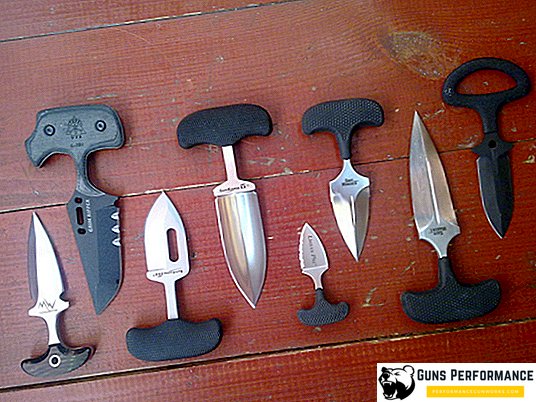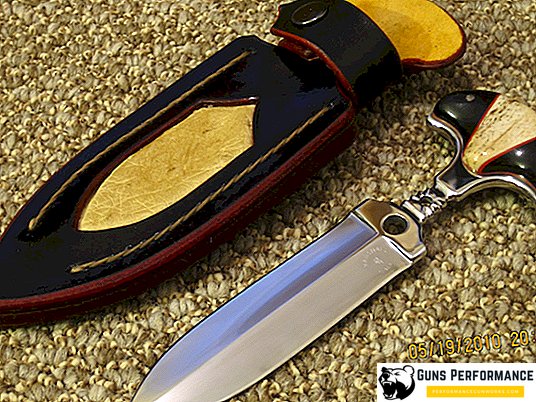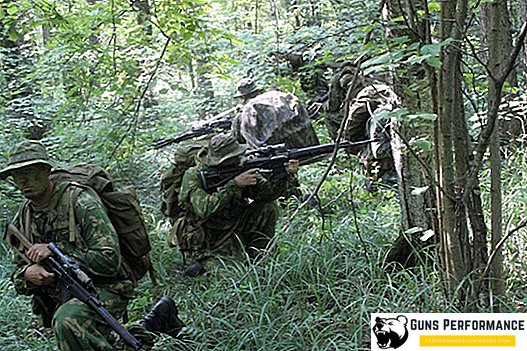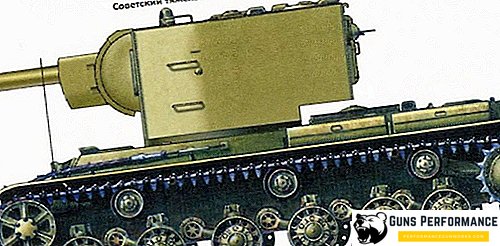
During the dashing nineties, a number of fundamentally new devices for defense against attack appeared. One of them is a jabbing knife or push-dagger. His invention is often attributed to the inhabitants of the prison under the unofficial name "Taganka", and all knock-type knives are considered prisoners' specific weapons. Let's try to figure out whether this is true or not.
The emergence of the butt knife

The stabbing knife resembling modern models appeared in the USA, during the gold rush of the 19th century. It is not known for certain which weapon served as a prototype for push-dagger, but this weapon clearly had Asian roots. Most of all, the butt knife looks like Indian Qatar, but is somewhat similar to ninja claws. Most likely, this weapon was delivered by the Chinese or Hindus, and local craftsmen based on it invented a model that is more suitable for covert and sudden use. This fight with a knife can not be waged with a knife, but as a hidden weapon he acted very well. Most often, the poker knife was used by card cheaters of those times in order to carry away the won money without hindrance. The pistol was hard to hide, and then very few people knew about the silencers, but the tychkovy knife appeared in the hands suddenly and inflicted very unpleasant and shocking wounds, discouraging the opponent's desire to pursue the owner of push-dagger. Minimal knowledge of percussion technology and a knife jabbed in his fist often became decisive arguments in the gold miners dispute.
Flap knives for self defense

Nowadays, all butched knives are positioned as knives for self-defense. The use of knives for this purpose is generally a big question, since knife wounds are very dangerous and fraught with death. If you want to protect your life and health with a knife, be prepared to face the excess of self-defense measures and the opportunity to go to jail. However, if you choose from a heap of different models of knives, it is the butt wounds that cause the least dangerous wounds because of their short blade. However, the enemy may also die from shallow wounds due to blood loss.
Pick knife selection
If you are seriously thinking about purchasing a butt knife, you should not chase after expensive models that are made of outstanding steel. Cutting the sausage with such a knife will not work anyway, so there will be enough steel grades 40x13 or 65x13 (or analogues of the type 440 steel). On bonded knives, blued steel is usually not used, as carbon steel is usually blued. Stainless steel does not need it.
The main thing when choosing a knife is a comfortable handle. And by eye it is very difficult to determine. Definitely not worth buying such knives without pads on the handle. No matter how brutal such a knife looks, at the very first blow it will crash into the palm of the butt. The thin handle will not lie tight in your hand, the knife will begin to fidget and damage your fingers at best (at worst, it will simply break them). Choose a knife with overlays or simply with a thick handle. This is where the trick lies. Everyone’s hands are different, and a push-dagger convenient for one may not suit another. The only option is to take each model you like in your hands and be guided by sensations. When the knife fits well in the hand, should not feel discomfort.
Modern models
Due to the growing demand for butt knives, many companies have mastered their production. Consider a few of the most popular models:
- Taganka from the company "Russian Darts". One of the first representatives of butt knives in the CIS. Available in various versions of the handle, without lining, with wood and textolite. Without lining is not recommended for use;
- Paul Chen Citizen. Chinese manufacturer, producing high-quality replicas of Japanese and other swords. This model is very different from the traditional butt knives. It is foldable and can be fixed in several positions. Depending on this, it is used as a normal folding knife or as a push-dagger. Workmanship at a very high level (the price, however, too);
- Viking Nordway, model K323. This knife company produces many models of inexpensive knives. Of the entire range of butt knives, the K323 model has the most interesting design and functionality. This knife is a slightly reworked copy of a Seraphym knife from Mercworx;
- Cold Steel Safe Maker I. Very aggressive model from the manufacturer from the United States. It has a dagger blade, which improves the permeability;
- Cold Steel Safe Keeper III. A more peaceful model from the same manufacturer. It can be used not only in self-defense, due to the shape of the blade is suitable for breaking glass in a car in an accident.





Steel for knitting knives
Since the task of push-dagger is not to cut products or planing wood, steel for its manufacture, as a rule, does not have outstanding characteristics. The knife blade must have the following qualities:
- Stainless steel;
- The thickness of the blade should exclude its accidental breaking;
- The blade sharpening angle should be 65 degrees.
All these parameters are advisory in nature, based on the characteristics of this type of knives. If desired, they can be changed to suit your needs.
Steel stamps for push daguer:
- Stainless steel 40x13. Used mainly on kitchen knives, often used for butt knives;
- Stainless steel 65x13. This is a higher quality steel, used for expensive models of kitchen knives and simple hunting knives. This steel and its foreign analogues are used for more expensive models of butt knives.
It happens that the butt knives use more expensive steel grades. These are mainly custom made models.
Making your own hands
If you can not pick up a push-dagger by your hand or you want to get a quality knife in a single copy, you can make it yourself. For making, you definitely need a drawing, a steel form, material for the handle and a set of tools. The drawing is needed to understand what form your future knife will be.
Stages of work:
- Draw a drawing;
- Cut the billet of steel;
- Holes are drilled in the handle to secure the lining;
- With the help of the grinder, the descents on the blade are displayed;
- The blade is ground;
- Elements of overlays on a handle are turned out and fixed.

During the work there can be many difficulties. For example, a grinder is a rather specific tool, if you don’t have one (and most likely it will), you’ll have to do descents on an electric sharpener, which requires considerable experience. Usually, the descents on the toil are not bad after making 5-6 knives. When drilling holes in hardened steel, you may need a drilling machine. Grinding is a fairly long process, involving the use of sandpaper of different grain sizes.
If your blade is not hardened, make the descents much easier. Only then you need to harden it and release it using technology that few people know, so it is better to use a hardened billet. When working on the gravel, its main thing is not to overheat, otherwise the hardening will disappear. Do not rush, the billet should be more often cooled in water.
The staple knife is an interesting self-defense weapon. You will get a serial copy or make it yourself, the main thing to remember is that it is better to settle any conflict peacefully, avoiding unnecessary bloodshed.












